Quick search
CTRL+K
Quick search
CTRL+K

Manchester, with its more than two million inhabitants, is one of the largest urban in England areas outside London, and as a tourist you will experience an exciting and thriving cultural life and a lot of activities in the historic industrial city. The cozy center with many prestigious buildings from the decades around 1900 is especially good for many walks.
The city of Manchester itself is the heart of the industrial area, where not least textile production laid the foundation for the area’s prosperity and growth. The many industrial buildings still leave their mark on the city center and surroundings, and among the many highlights are the old Liverpool Road Railway Station and the Science and Industry Museum.
There are several interesting museums in Manchester. Natural history and archaeology are in focus at the Manchester Museum and you can also experience interesting art as well as parts of Britain’s military history at the Imperial War Museum North, located in the revitalized dock area.
For many fans around the world, a trip to Manchester is also a visit to the city of football, and there are several opportunities to live out the football fever. The city’s two major football clubs are Manchester United and Manchester City, and in the center of the city you can visit the National Football Museum.
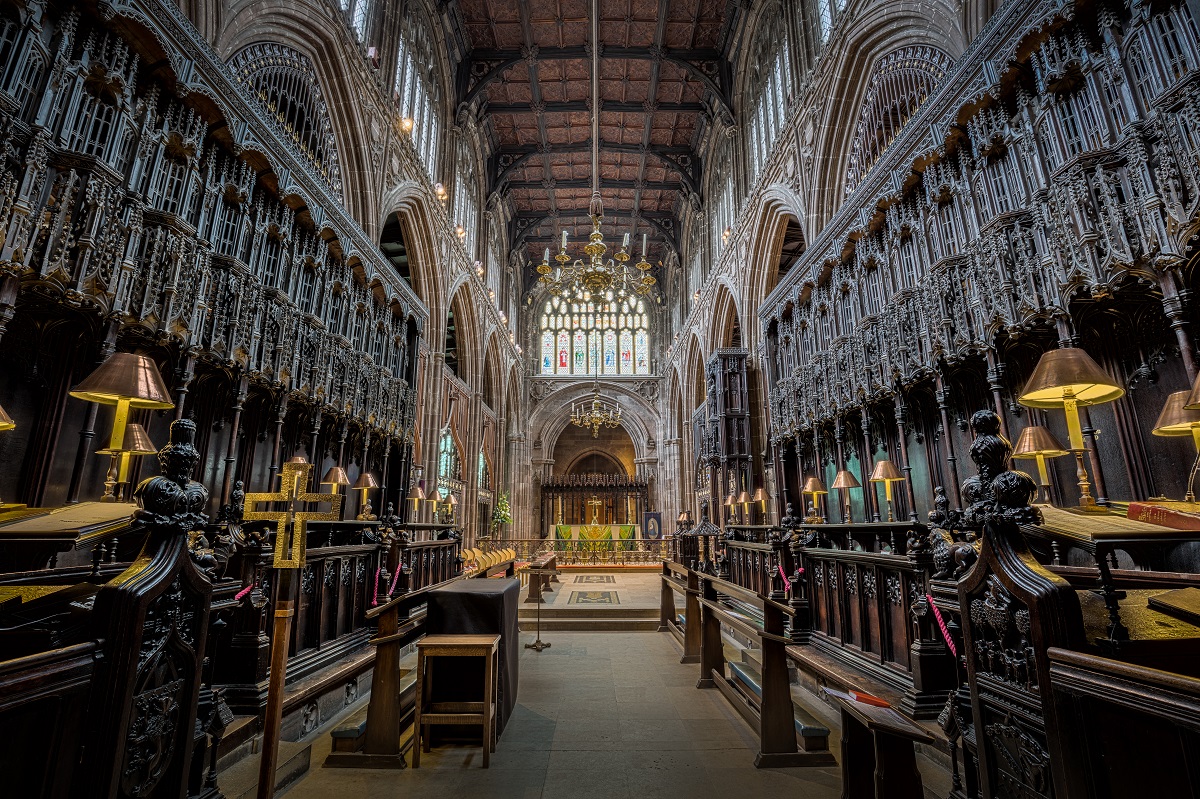
This is Manchester’s cathedral and thus the seat of the Anglican bishop in the city. In its original version, the church was founded as a parish church in 1215, and the then church building was expanded over the following many centuries. The style is primarily the so-called Perpendicular Gothic, which was used in England as a Gothic variant with particular emphasis on vertical lines in architecture.
During the long period of extensions, fine interior works were also continuously added; an example is the church’s beautiful woodcarving work. In 1847, the church was elevated to the status of a cathedral. The building became a few meters higher in the 1860s, when the original tower had to be demolished due to the risk of collapse. A new one was listed as a slightly taller copy of the first.
During the German bombings during World War II, the cathedral was partially destroyed; the church’s Victorian stained glass windows were lost and have since been replaced by some modern versions of classical mosaic windows.
A new and modern museum has since been built next to the cathedral, which interactively conveys the history of the cathedral and the ecclesiastical ties to Manchester. One of the museum’s known effects is The Hanging Bridge from 1421. It is a bridge that was hidden for many years before it was excavated in the 1880s.
Manchester Town Hall is the city’s town hall. It was built in elegant Victorian neo-Gothic style in the period 1868-1877. The style was partly determined by the architecture of the time and partly through a choice to recall Manchester’s proud trading traditions with, among other things, textiles with the Hanseatic League. The town hall was expanded in the years 1934-1938.
From the outside, the building is dominated by the 85 meter high bell tower. Inside the Great Hall you can see 12 murals by the artist Ford Madox Brown from 1879 to 1893. The paintings reflect some recurring themes from Manchester’s history, from Roman forts to Christianity, trade and the textile industry. Madox Brown’s works are known as The Manchester Murals.
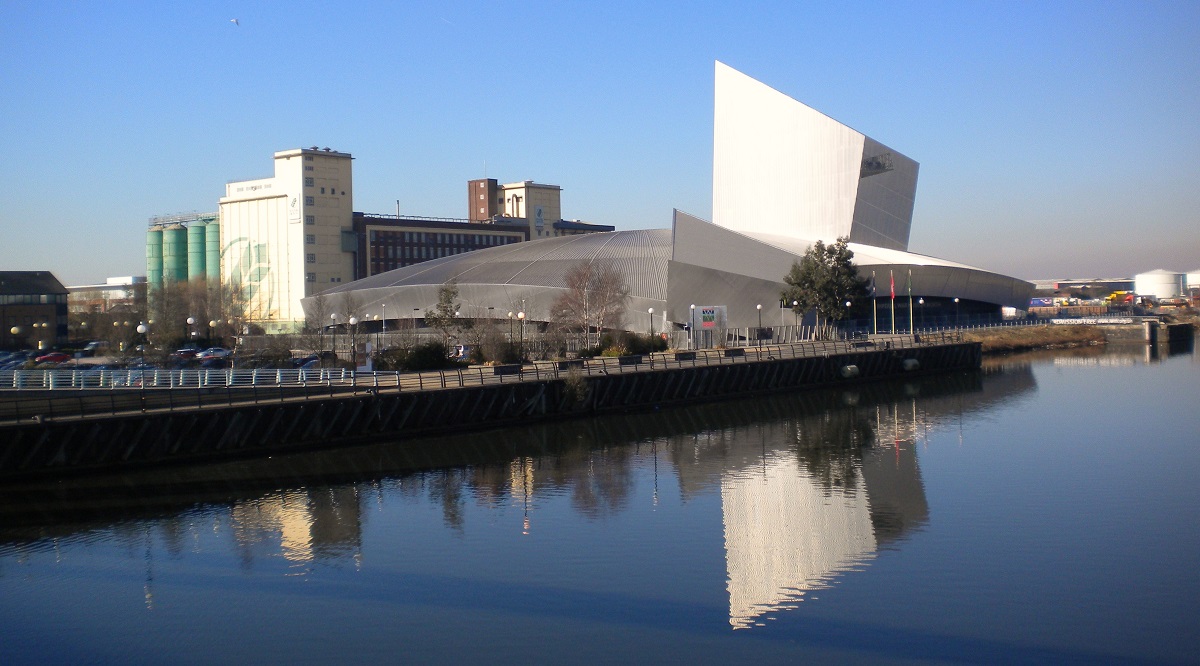
Imperial War Museum North is a war museum where you can see and experience tanks and other equipment as well as descriptions of, for example, prisoners of war and two world wars. The museum is very informative, and it is a department of the Imperial War Museum in London.
Here in Manchester, the wars and disputes British and other Commonwealth soldiers have been involved in since the early 1900s are described. As a start to the large collections, you can see The Big Picture, which is an audio-visual show that ties both Britain’s wars and the museum’s effects and themes together.
The museum building was designed by Daniel Libeskind, and his work stands as one of Manchester’s most distinctive modern buildings. The museum opened in 2002.
The Museum of Science and Industry is a museum that welcomes visitors to a world of science and technology. The focal point of the museum’s collections is Manchester’s contribution to and use of science and technology in research and industry. It has fostered many themed exhibitions which, among other things, concern paper production and coal mining.
The museum is housed in various former industrial and transport buildings. The most historically interesting building is the former terminus of the Liverpool and Manchester Railway, which opened in 1830 as the world’s first passenger railway line. The station was called Liverpool Road Railway Station. It served as a terminus until 1844, when the line was extended to Hunt’s Bank Station, which is now Manchester Victoria Station. Liverpool Road was used by British Rail as a freight station until 1975.
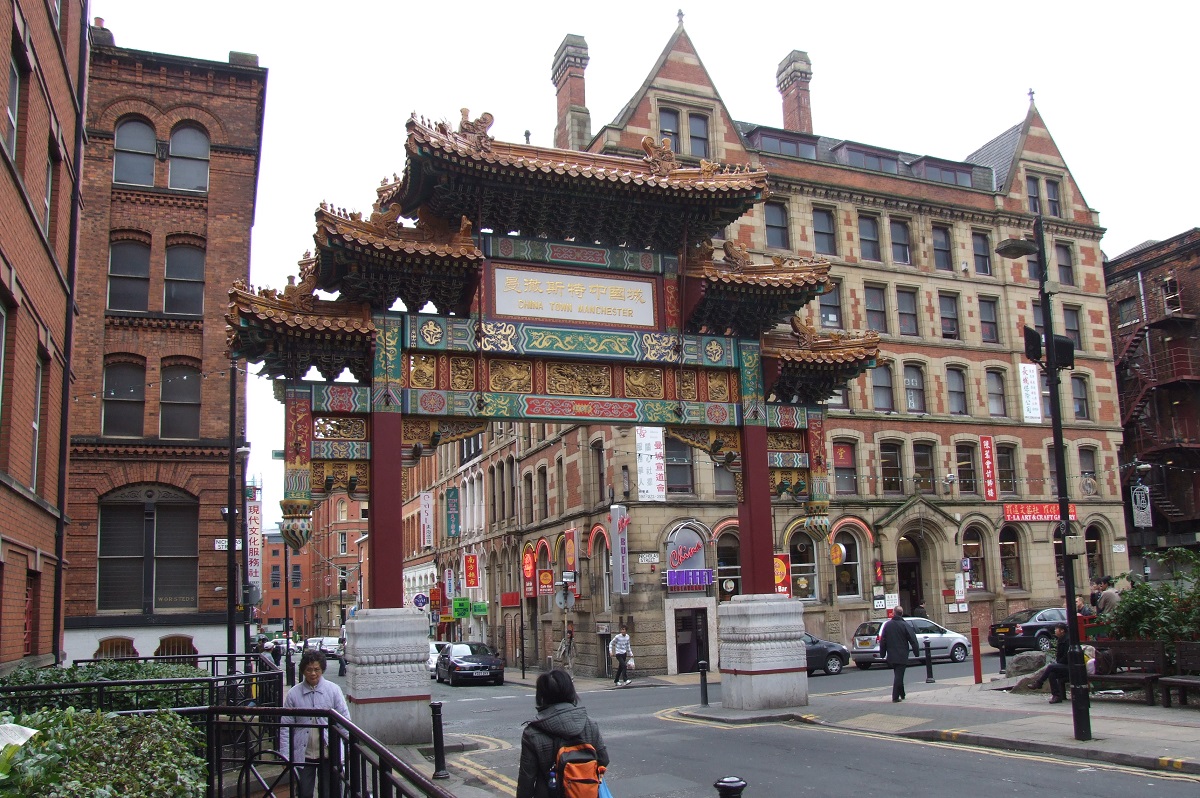
In Manchester, the first Chinese restaurants were opened in the years after the Second World War. More were added in the 1960s, and despite some closures of the places, a number of Chinese eateries and shops were added, especially in the 1970s. The former warehouse buildings around Faulkner Street, George Street and Nicholas Street were used, and eventually a proper Chinatown had seen the light of day; Chinatown was thus a reality.
Today, a number of cultural activities are also organized in Chinatown, and major events such as the Chinese New Year are celebrated in true Chinese fashion with, among other things, colorful dragons and exuberant fireworks.
The Chinese portal in Faulkner Street stands as a symbol of the entire Chinatown district. The portal was built in 1987 and is designed in traditional Chinese style.
The stock exchange building Royal Exchange was built in the years 1867-1874. It was built as a replacement for the city’s former commodity exchange, which had become too small. In the new stock exchange building, not least cotton and textiles were traded, which were the area’s major exports.
In 1968, trading ceased in the Royal Exchange, which came to be empty for the following five years. In 1973, theater performances were staged in the building for the first time, and since 1976 the Royal Exchange Theater has been housed here. Now a shopping center has also been set up, which gives the opportunity to enter the historic building.
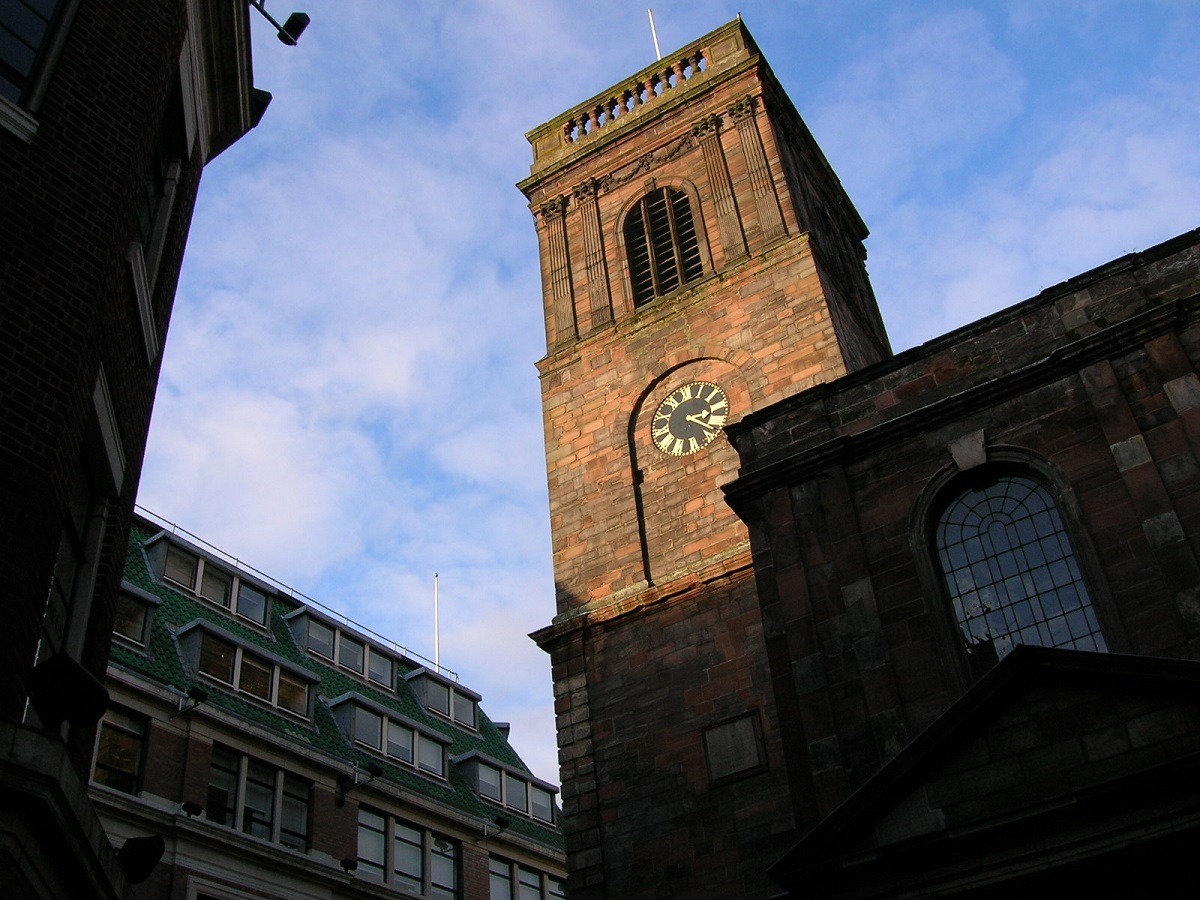
St. Ann’s Church is a church that was built 1709-1712 in a place where there were fields at the time. The style is neoclassicism, and local sandstone was used as building material. When it was built, the interior was simpler than today, for example the leaded windows were only introduced in the 1800s.
The expansion around the church took place in the decades after the consecration of St. Ann’s Church. The square itself St. Ann’s Square was laid out in 1720, and from the 1730s construction really picked up, and new streets such as King Street were laid out.
In the central square Albert Square you can see the Albert Memorial. The memorial was erected as a monument to Queen Victoria’s husband, Prince Albert. A marble statue of the prince stands in the center of the Albert Memorial and was designed by Matthew Noble and created in the years 1862-1867. Around the statue is a ciborium, where there are symbols of art, trade, agriculture and science.
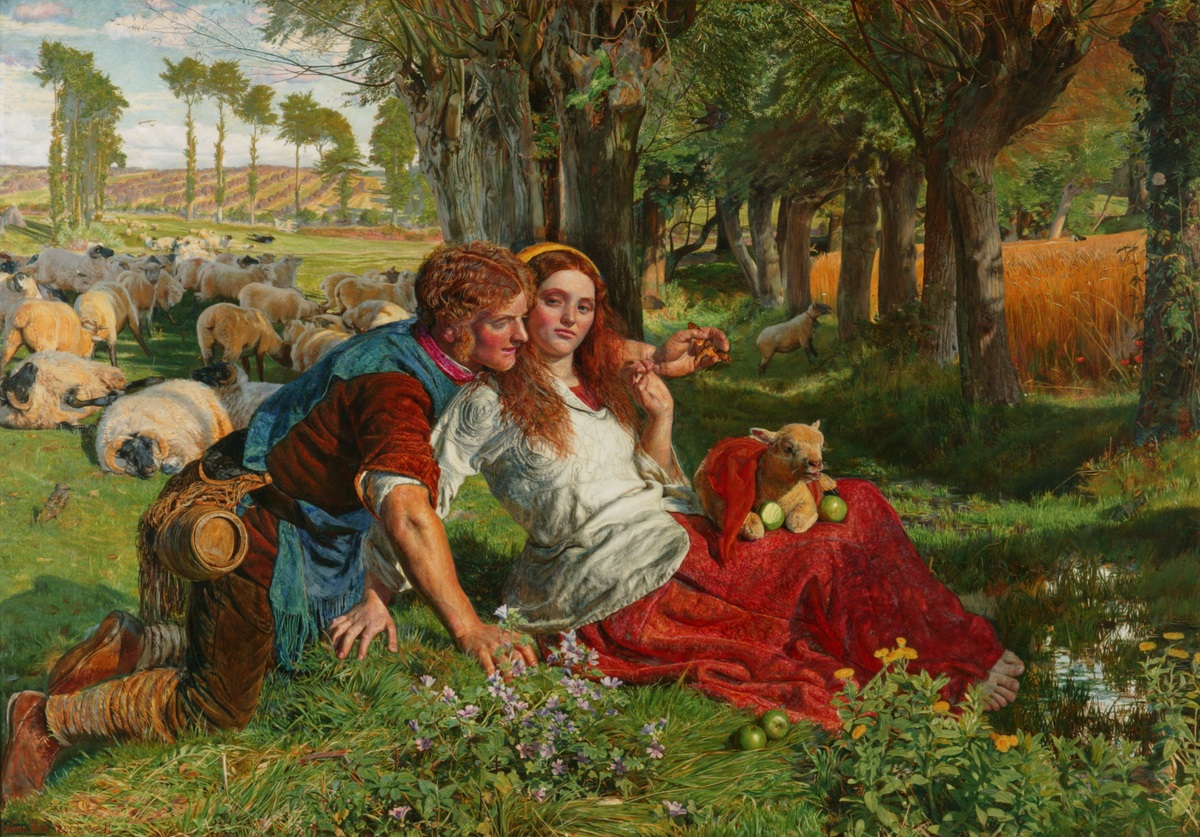
Manchester Art Gallery is a fine art gallery owned by Manchester. It is therefore natural that the collections take their starting point from works of art and artists that have something to do with Manchester. Among the notable works are a number of the French impressionist Pierre Adolphe Valette. Valette painted in Manchester in the early 1900s.
Manchester Art Gallery is housed in several buildings. The most distinctive building is the former Royal Manchester Institution, built in Greek Neoclassical style 1825-1835. The Royal Manchester Institution was established in 1823 by some of the city’s leading merchants, artists and more. The aim was to strengthen Manchester’s cultural status. From the start, the institution organized exhibitions and other things that raised awareness of art in the city.
The site of Castlefield was where the Romans established a military outpost in this region in their time. You can still see part of the defensive wall and the actual fort, the remains of which have been restored and rebuilt. The buildings date from around 200 BC.
The fort, which used to be on fields, gave its name to the area of Castlefield, where a number of canals, locks, viaducts, industrial and warehouse buildings were built here in the era of industrialisation. They stand today as a symbol of the city’s heyday in industrial England.
The entire area is now part of the country’s first urban historic preservation area; it is called the Castlefield Conservation Area. It is recommended to take a stroll in the neighborhood to smell the atmosphere of the successful industrialization.
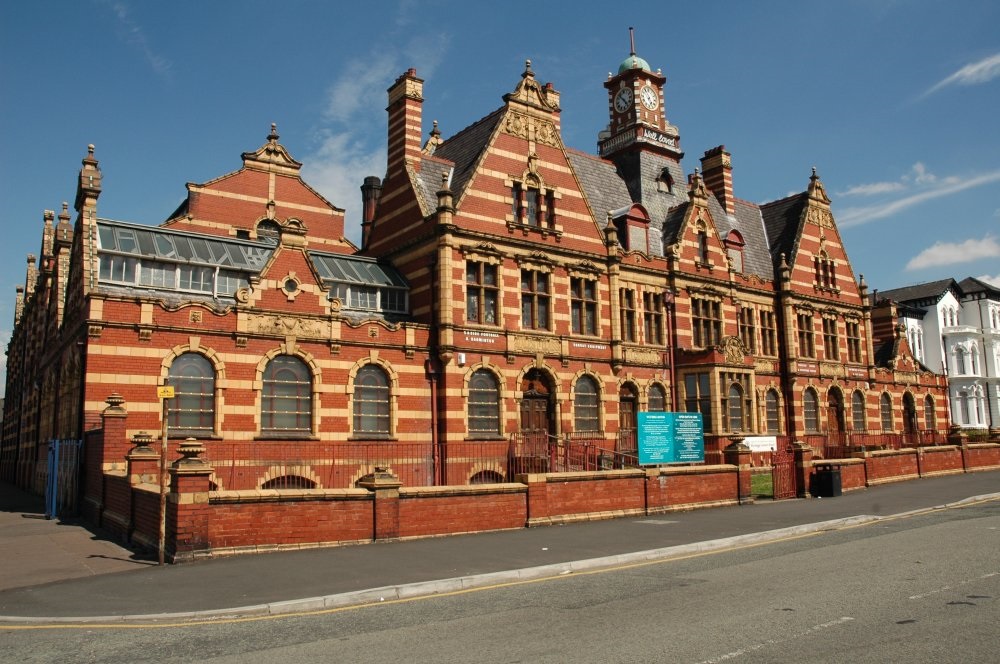
Victoria Baths opened its doors in 1906 to some quite luxurious bathing facilities with public access. Manchester was then a rich city, and therefore the building was constructed solidly and with many fine details. This applies, among other things, to the terracotta decorations on the facade and the beautiful, decorative mosaic windows. From the outside, the building resembles a small château, and the style is strongly inspired by the Dutch Renaissance.
At the opening there were several pools and a Turkish bath. In 1952, the site became the first in England to install a hot tub with public access.
Manchester Museum is a museum with large and diverse collections in archaeology, anthropology and natural history. With its more than 6 million objects in the collection, the museum is one of the largest and best of its kind in England, and it is set in a beautiful setting in the neo-Gothic buildings of the city’s university.
The history of the museum goes back to 1821, when the natural history collection was established in the slipstream of the city’s prosperity through the many successful industries. Over time, the collections have grown, and they span exciting effects from all over the Earth. Among the popular exhibits is a cast of a Tyrannosaurus Rex that was excavated in North Dakota in 1992.
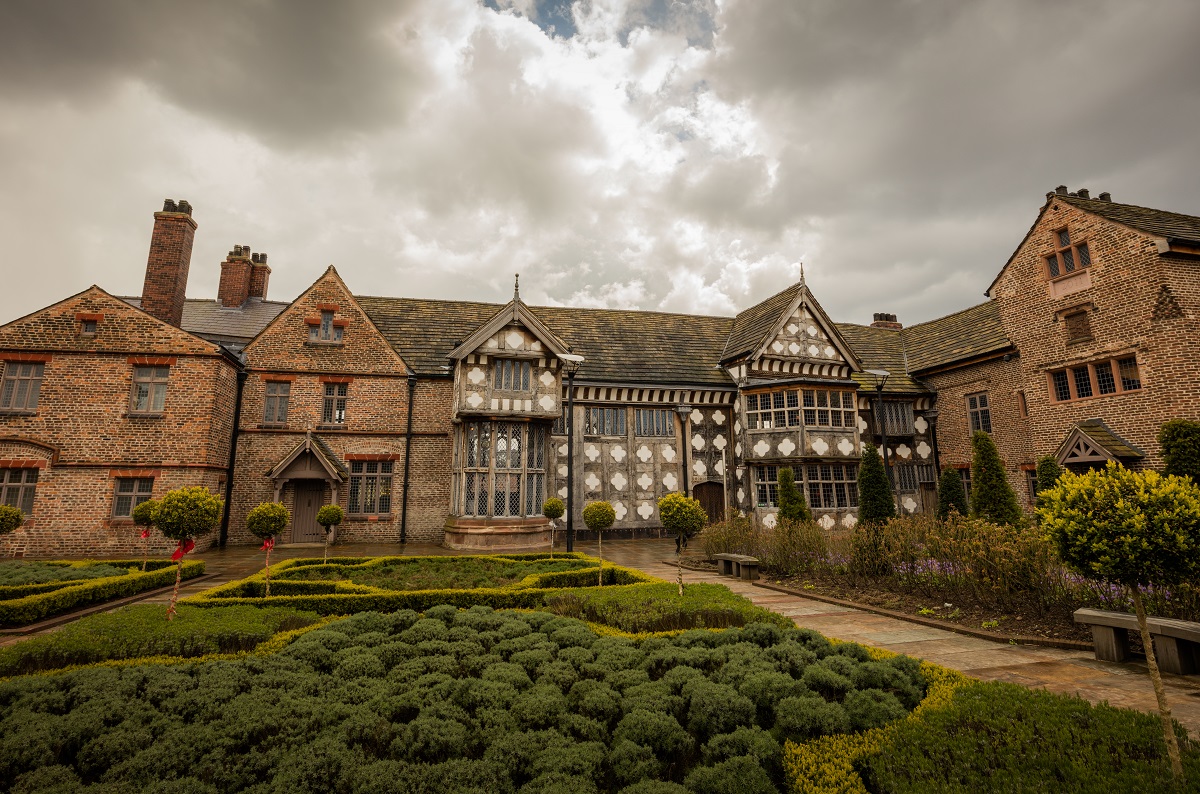
Ordsall Hall is a magnificent English mansion in the Tudor style. Ordsall Hall was first mentioned in 1177, but the current building is more recent and has been extended and altered over several centuries. The great hall in the mansion was built in 1512.
For many years the mansion was owned by, among others, the Radclyffe family, but since 1959 it has been owned by the local council in Salford. The mansion was opened to the public in 1972, and a local history museum has been set up here.
Ordsall Hall is a fine example of a typical English mansion with countless beautiful and whimsical details in the many rooms and halls. It is even said that the place is haunted. On a trip here you can experience the history and interior of the place.
Manchester United is one of the world’s most famous and popular football clubs. Countless stars have played for the club over the years, whose history is told in this museum, which also offers a tour of the great stadium, Old Trafford.
Among other things, you can choose to watch your favorite goals, read about the star players, see glimpses of Manchester United’s international triumphs and admire the many trophies the club has won over time.
If you prefer a visit to the other big team from the city, Manchester City, that can also be done. It takes place at City’s home ground at Stadium Drive.
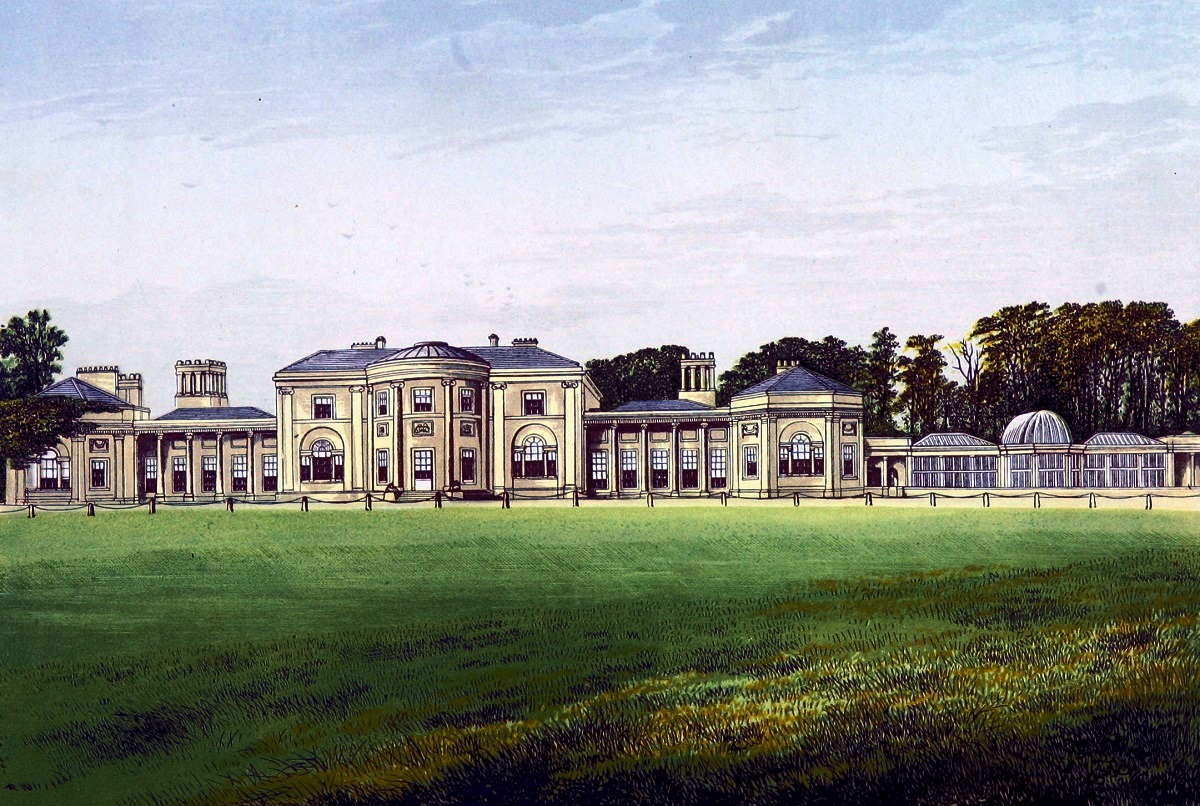
Heaton Park is a recreational haven of 2.4 square kilometers, which contains many activity opportunities. The historic center of the park is the neoclassical mansion from the 18th century, Heaton Hall, which is now a museum.
In the park, you can rent rowing boats, play golf or bowling, take a mini-train tour and ride a tram on the tracks from Middleton Road to the Manchester Corporation Tramway’s former depot just 300 meters inside the park. In the summer, there are also outdoor plays in Heaton Park, which also gives children opportunities to play in two large playgrounds.
In Quarry Bank Mill you get close to the industrial development of the Manchester area in the 18th century. Water power was the basis for the many industries that sprung up, and at this location the water was harnessed to power a large cotton mill.
The machines, the lives of the workers and the factory owners and the importance of the large textile industry to the prosperity of Manchester and the surrounding area are described on the spot, and in addition you can take a walk in the beautiful surroundings, where the Quarry Bank Mill Garden is an experience in the season.
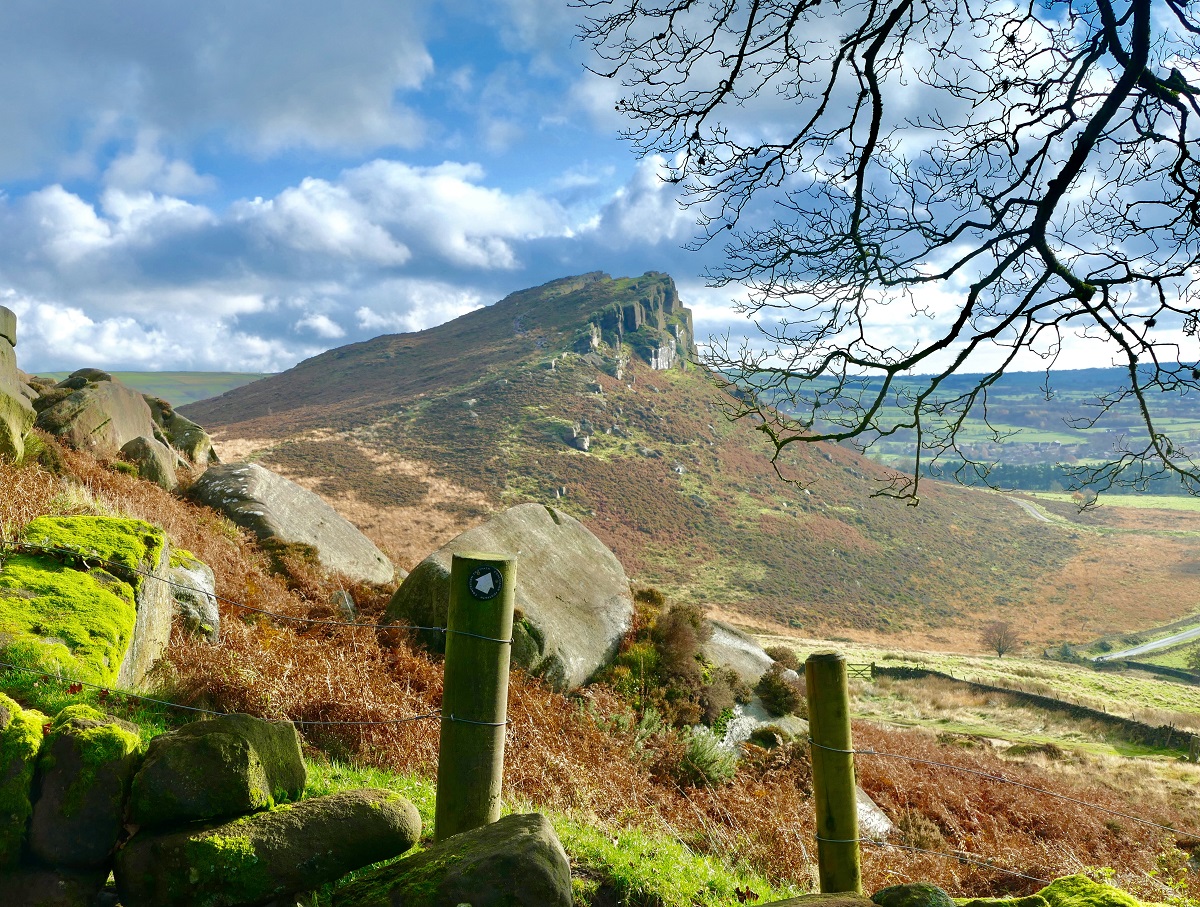
The Peak District is a national park located in the area between the cities of Manchester, Stoke, Derby and Sheffield. The size of the park is approximately 30×50 km, and there is a wealth of cultural and natural experiences in the beautifully hilly landscape. The Peak District was made a national park in 1951 and was thus the first in the country with this status.
The park is mainly at an altitude of more than 300 metres, and the highest point is Kinder Scout at 636 metres. The mountains are generally rounded with soft rock formations here and there. Among the beautiful nature experiences there are small farms, cozy towns and a number of activity opportunities for the many tourists who visit the area.
The spa town of Buxton is the Peak District’s largest town. Over the centuries, the city’s hot springs have attracted guests, and in addition to wellness, Buxton offers beautiful architecture, the beautiful Pavillon Gardens, a city and art museum, and the city’s opera house.
At the town of Castleton lie the ruins of Peveril Castle, whose history dates back to the 12th century. Castleton is also the starting point for a trip to the fascinating Speedwell Caverns, where you can go on a boat trip. Adjacent to Speedwell Caverns is a link to the 141 meter high cave Titan.
In the Peak District you can also get close to English industrial history. In Matlock Bath there is a mining museum and on the Derwent River is the Derwent Valley Mills, included in the UNESCO World Heritage List. Derwent Valley Mills dates back to the 18th century and found success through cotton spinning in a new way.
Historic transport can be sampled on the preserved Matlock-Rowsley railway line, where steam trains run. If you want to drive further, the large tramway museum, the National Tramway Museum, is located in the town of Crich. Trams run here from most of England and from, for example, New York and Johannesburg abroad.
Liverpool is one of England’s most interesting cities to visit, and many travelers already have an some knowledge of not least the cultural and sporting life before coming to town. The Beatles with Paul McCartney and John Lennon at the forefront are from here, as are the city’s two football flagship clubs Liverpool FC and Everton.
Liverpool, of course, is far more than football and music. It is known as a cathedral city with two of the most spectacular church buildings in the country. The majestic Anglican Liverpool Cathedral and the Catholic Metropolitan Cathedral in modern architecture are both some of the landmarks of the city.
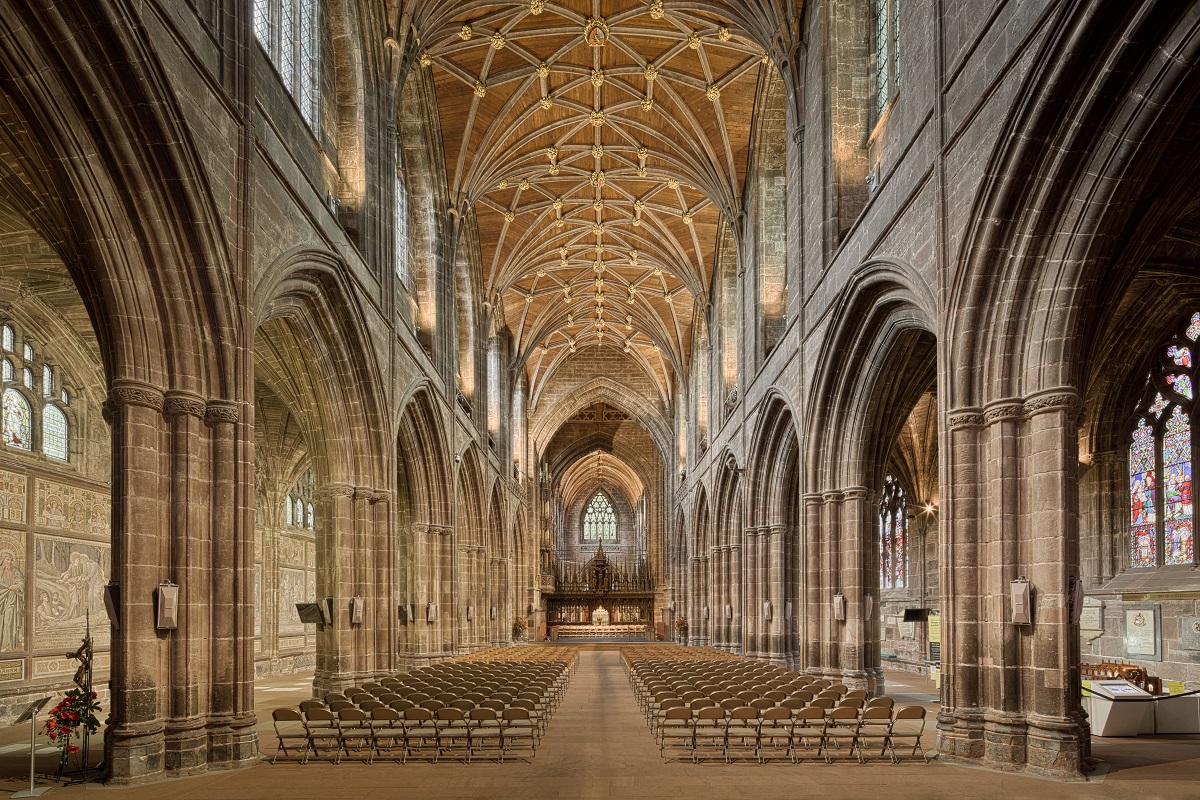
Chester is a city located close to Wales in the area south of Liverpool. The city was founded by the Romans around the year 70 with the name Deva Victrix, and the city was one of the most important in Roman England. After the withdrawal of the Romans, the settlement continued, and the Anglo-Saxons expanded the city walls as a defense against Vikings.
Later, the port of Chester became the country’s busiest river port and the city enjoyed great success as a trade post. However, the River Dee silted up, causing nearby Liverpool to grow. Chester flourished again in the Georgian era, and with the Industrial Revolution the city became home to many of the upper classes, unlike the industrial cities of Liverpool and Manchester.
52 Church Street
afflecks-palace.co.uk
123 Market Street
debenhams.com
21 New Cathedral Street
harveynichols.com
Market Street
manchesterarndale.com
St. Ann’s Gate
marksandspencer.com
Stockport
merseyway.com
Cross Street, King Street, Market Street, Around St. Ann’s Square, Deansgate, Around St. Peter’s Square, Oxford Street, Mosley Street, Chinatown
Liverpool Road
msim.org.uk
Alton Towers
Alton, 75 km/46 mi SE
alton-towers.co.uk
Camelot Theme Park
Charnock Richard, Chorley, 40 km/25 mi NW
camelotthemepark.co.uk
Museum of Transport
Boyle Street, Cheetham
gmts.co.uk
Manchester United Museum and Tour
Sir Matt Busby Way
manutd.com
Knowsley Safari
Prescot, 30 km/18 mi W
knowleyssafariexperience.co.uk
The Romans were possibly the first to settle in present-day Manchester. The original Roman fort was built under Gnaeus Julius Agricola in the year 79. The fort was an intermediate station on the important road between Chester and York, and at the same time played a defensive role in the region.
The fort of Rome was located at the confluence of the rivers Medlock and Irwell, and it was a natural place to fortify. The Roman name was Mamucium, and from this time you can still see ruins in the Castlefield district, where a garrison of 500 men is believed to have been stationed. The Roman era in the area ended in 410.
After the Roman period, there was a transition without much settlement, and then there was invasion from, among others, the Danish and Saxon side, and several times it came to fighting with the Vikings.
In the 1000s, the area came into the hands of the Gresle family, and as barons ruled, the settlement grew, and this time it happened at the confluence of the Irwell and Irk rivers instead of the Roman Mamucium.
The church was established in early Manchester, whose parish stretched for about 160 square miles. The large area was a sign of a small population and a low income base for the church. Only taxes at that time were debt to the Viking kings.
The Barons de Gresle also built a fortified residence in Manchester, from which they administratively controlled the city through, among other things, leasing land; The barons formally owned the town, the center of which was around the castle and the Church of Saint Mary.
The population and number of craftsmen began to rise around the year 1200, when Robert de Gresle, as the first baron, took up permanent residence in the city. He expanded his residence, and that work brought with it bricklayers and carpenters, and their activity and skills spread throughout the city.
Trade was one of the new activities that brought Manchester forward. In 1223, the city obtained the right to hold an annual market, and they were held around where St. Ann’s Square is located today.
Baron Thomas de Gresle granted Manchester certain trading rights in 1301, thereby formally the city of barons becoming a market town. It was a status that helped to increase the city’s status, but for a long time, it was still one of many smaller towns in the area.
In the 1300s, Manchester’s defense was expanded. The city’s lines of defense included the Irwell and Irk rivers, and additional obstacles were dug and fortifications made, making hostile entry into the city difficult.
The 13th century was also the century that came to be crucial to the development of the city over the following many centuries; this is where Flemish weavers settled, and they created the city’s textile industry. The Flemish used wool for textiles and laid the foundation for the industrialization of Manchester and the area around the city. Manchester quickly became Lancashire’s primary industrial city.
During the 16th century, Manchester had established itself as a major industrial and commercial city through the wool trade. The first industrialization continued through the 16th century, and from the 1620s it revived with the introduction of the weaving of barchent. With the new techniques new industries were developed and Manchester saw a new wave of Flemish settlers come to town.
As a major English city, Manchester had close ties to London during this time, and in the mid-1600s, the industrial city was represented in the British Parliament with a seat. Charles Worsley became the city’s first MP, and after the dissolution of parliament in 1654, Worsley became local leader in the region around Manchester. Worsley introduced a new Puritanism into the city, which was inspired by London currents.
Already in 1660, Manchester was deprived of its seat in Parliament as a punishment. This happened in connection with the reintroduction of the monarchy in England in 1660, and the town was without a representative in the Assembly until 1832. Despite the political instability, however, growth continued in Manchester, which up to the 18th century continued to be one in English. scale smaller market town.
The market town of Manchester was given new opportunities from 1861, when the Duke of Bridgewater’s canal was opened between the city and Worsley. The canal connected the waterfield to the centrally located Castlefield, and it meant, among other things, that coal could be sailed for the growing production there from the duke’s mines in just Worsley.
It was a time when cotton replaced the former, dominant wool production, and the combination of a strong increase in demand and the application of new technology made Manchester the center of growing industrialization. Cotton spinning and real textile industry shot up, and the city’s prosperity was on the rise.
In 1764, the spinning machine Spinning Jenny was installed in Manchester, and it started, so to speak, the industrial revolution. Indeed, Spinning Jenney was the first spinning machine to be used industrially in a fully automated production process in Manchester, and it set new standards for industry development.
In 1792 a commissariat was set up to ensure the continued growth of the city, and from that time forward rapidly advanced for Manchester. From about the year 1800, the development of the city that was to grow into the dominant one in the area exploded.
With industrialization and economic prosperity also came some new opportunities for the citizens of the city. Culturally, several new institutions were established in the city, and in 1830 the world’s first publicly accessible railway was inaugurated; it linked Manchester to Liverpool and was a solid proof of Manchester’s technological and economic capabilities. Some years before, the world’s first bus line had been put into operation; from 1824 it drove from Market Street to Pendleton and Salford.
In 1835 the local administration was formed and five smaller urban areas were merged under the actual Manchester as a unified municipality; later several upland municipalities have been merged with Manchester. Politically, Manchester in the 19th century became the inspiration for Friedrich Engels, and the many works influenced the formation of the actual English labor movement.
In the 19th century, several educational establishments and some of the popular cultural institutions were still visible. The Hallé Orchestra was founded in 1857, and the city’s major football clubs with Manchester United as its flagship were formed.
The city did not stand still industrially, for example, the Manchester Ship Canal was excavated from 1887. The canal was completed in 1894, making Manchester’s port the third largest in England. The late 19th century was also the golden age for the city’s splendid buildings such as the impressive Town Hall building, Town Hall.
At the turn of the 20th century, the Manchester region was one of the ten most populous in the world. The city had a developed production with chemical industry, electrical industry and much more. It was a city characterized by many years of industrial prosperity.
With the depression in the 1930s, a sudden downturn hit Manchester’s textile industry. Competition from abroad was a contributing factor and it became the start of the city’s industrial, economic and population out there. During World War II, some military industry was laid in Manchester, which for that reason was hit by violent bombings 1940-1941 during the German blitz.
In the post-war years, many neighborhoods were sanitized, and housing blocks shot up. Industrially, technological research and development set the city’s agenda, and culturally and sportingly, Manchester flourished with Manchester United and the broadcasting company Granada as locomotives.
In recent decades, much has happened to Manchester’s image and cityscape. Where the city used to be thought of as one of England’s old, worn industrial cities, it is now a modern industry and research as well as a thriving cultural life. Several of the old industrial buildings close to the center and along the harbor have undergone a revitalization in the form of the creation of exciting museums, business districts and a vibrant shopping and gastronomy nightlife.
Manchester offered to hold the Olympic Games in both 1996 and 2000, but was not selected. By contrast, the city was part of the world’s center where the Commonwealth Games were conducted with great success. Since then, the city has been the center of many events that have been seen far beyond the borders of the country, while retaining and renovating the old industrial heritage for the benefit of the many tourists who go to Manchester.
Overview of Manchester
Manchester, with its more than two million inhabitants, is one of the largest urban in England areas outside London, and as a tourist you will experience an exciting and thriving cultural life and a lot of activities in the historic industrial city. The cozy center with many prestigious buildings from the decades around 1900 is especially good for many walks.
The city itself is the heart of the industrial area, where not least textile production laid the foundation for the area’s prosperity and growth. The many industrial buildings still leave their mark on the city center and surroundings, and among the many highlights are the old Liverpool Road Railway Station and the Science and Industry Museum.
About the upcoming Manchester travel guide
About the travel guide
The Manchester travel guide gives you an overview of the sights and activities of the English city. Read about top sights and other sights, and get a tour guide with tour suggestions and detailed descriptions of all the city’s most important churches, monuments, mansions, museums, etc.
Manchester is waiting for you, and at vamados.com you can also find cheap flights and great deals on hotels for your trip. You just select your travel dates and then you get flight and accommodation suggestions in and around the city.
Read more about Manchester and England
Buy the travel guide
Click the “Add to Cart” button to purchase the travel guide. After that you will come to the payment, where you enter the purchase and payment information. Upon payment of the travel guide, you will immediately receive a receipt with a link to download your purchase. You can download the travel guide immediately or use the download link in the email later.
Use the travel guide
When you buy the travel guide to Manchester you get the book online so you can have it on your phone, tablet or computer – and of course you can choose to print it. Use the maps and tour suggestions and you will have a good and content-rich journey.
Manchester Cathedral • Industrial History • Great Museums • Football
Overview of Manchester
Manchester, with its more than two million inhabitants, is one of the largest urban in England areas outside London, and as a tourist you will experience an exciting and thriving cultural life and a lot of activities in the historic industrial city. The cozy center with many prestigious buildings from the decades around 1900 is especially good for many walks.
The city itself is the heart of the industrial area, where not least textile production laid the foundation for the area’s prosperity and growth. The many industrial buildings still leave their mark on the city center and surroundings, and among the many highlights are the old Liverpool Road Railway Station and the Science and Industry Museum.
About the upcoming Manchester travel guide
About the travel guide
The Manchester travel guide gives you an overview of the sights and activities of the English city. Read about top sights and other sights, and get a tour guide with tour suggestions and detailed descriptions of all the city’s most important churches, monuments, mansions, museums, etc.
Manchester is waiting for you, and at vamados.com you can also find cheap flights and great deals on hotels for your trip. You just select your travel dates and then you get flight and accommodation suggestions in and around the city.
Read more about Manchester and England
Buy the travel guide
Click the “Add to Cart” button to purchase the travel guide. After that you will come to the payment, where you enter the purchase and payment information. Upon payment of the travel guide, you will immediately receive a receipt with a link to download your purchase. You can download the travel guide immediately or use the download link in the email later.
Use the travel guide
When you buy the travel guide to Manchester you get the book online so you can have it on your phone, tablet or computer – and of course you can choose to print it. Use the maps and tour suggestions and you will have a good and content-rich journey.


In Manchester, the first Chinese restaurants were opened in the years after the Second World War. More were added in the 1960s, and despite some closures of the places, a number of Chinese eateries and shops were added, especially in the 1970s. The former warehouse buildings around Faulkner Street, George Street and Nicholas Street were used, and eventually a proper Chinatown had seen the light of day; Chinatown was thus a reality.
Today, a number of cultural activities are also organized in Chinatown, and major events such as the Chinese New Year are celebrated in true Chinese fashion with, among other things, colorful dragons and exuberant fireworks.
The Chinese portal in Faulkner Street stands as a symbol of the entire Chinatown district. The portal was built in 1987 and is designed in traditional Chinese style.
The stock exchange building Royal Exchange was built in the years 1867-1874. It was built as a replacement for the city’s former commodity exchange, which had become too small. In the new stock exchange building, not least cotton and textiles were traded, which were the area’s major exports.
In 1968, trading ceased in the Royal Exchange, which came to be empty for the following five years. In 1973, theater performances were staged in the building for the first time, and since 1976 the Royal Exchange Theater has been housed here. Now a shopping center has also been set up, which gives the opportunity to enter the historic building.

St. Ann’s Church is a church that was built 1709-1712 in a place where there were fields at the time. The style is neoclassicism, and local sandstone was used as building material. When it was built, the interior was simpler than today, for example the leaded windows were only introduced in the 1800s.
The expansion around the church took place in the decades after the consecration of St. Ann’s Church. The square itself St. Ann’s Square was laid out in 1720, and from the 1730s construction really picked up, and new streets such as King Street were laid out.
In the central square Albert Square you can see the Albert Memorial. The memorial was erected as a monument to Queen Victoria’s husband, Prince Albert. A marble statue of the prince stands in the center of the Albert Memorial and was designed by Matthew Noble and created in the years 1862-1867. Around the statue is a ciborium, where there are symbols of art, trade, agriculture and science.

Manchester Art Gallery is a fine art gallery owned by Manchester. It is therefore natural that the collections take their starting point from works of art and artists that have something to do with Manchester. Among the notable works are a number of the French impressionist Pierre Adolphe Valette. Valette painted in Manchester in the early 1900s.
Manchester Art Gallery is housed in several buildings. The most distinctive building is the former Royal Manchester Institution, built in Greek Neoclassical style 1825-1835. The Royal Manchester Institution was established in 1823 by some of the city’s leading merchants, artists and more. The aim was to strengthen Manchester’s cultural status. From the start, the institution organized exhibitions and other things that raised awareness of art in the city.
The site of Castlefield was where the Romans established a military outpost in this region in their time. You can still see part of the defensive wall and the actual fort, the remains of which have been restored and rebuilt. The buildings date from around 200 BC.
The fort, which used to be on fields, gave its name to the area of Castlefield, where a number of canals, locks, viaducts, industrial and warehouse buildings were built here in the era of industrialisation. They stand today as a symbol of the city’s heyday in industrial England.
The entire area is now part of the country’s first urban historic preservation area; it is called the Castlefield Conservation Area. It is recommended to take a stroll in the neighborhood to smell the atmosphere of the successful industrialization.

Victoria Baths opened its doors in 1906 to some quite luxurious bathing facilities with public access. Manchester was then a rich city, and therefore the building was constructed solidly and with many fine details. This applies, among other things, to the terracotta decorations on the facade and the beautiful, decorative mosaic windows. From the outside, the building resembles a small château, and the style is strongly inspired by the Dutch Renaissance.
At the opening there were several pools and a Turkish bath. In 1952, the site became the first in England to install a hot tub with public access.
Manchester Museum is a museum with large and diverse collections in archaeology, anthropology and natural history. With its more than 6 million objects in the collection, the museum is one of the largest and best of its kind in England, and it is set in a beautiful setting in the neo-Gothic buildings of the city’s university.
The history of the museum goes back to 1821, when the natural history collection was established in the slipstream of the city’s prosperity through the many successful industries. Over time, the collections have grown, and they span exciting effects from all over the Earth. Among the popular exhibits is a cast of a Tyrannosaurus Rex that was excavated in North Dakota in 1992.

Ordsall Hall is a magnificent English mansion in the Tudor style. Ordsall Hall was first mentioned in 1177, but the current building is more recent and has been extended and altered over several centuries. The great hall in the mansion was built in 1512.
For many years the mansion was owned by, among others, the Radclyffe family, but since 1959 it has been owned by the local council in Salford. The mansion was opened to the public in 1972, and a local history museum has been set up here.
Ordsall Hall is a fine example of a typical English mansion with countless beautiful and whimsical details in the many rooms and halls. It is even said that the place is haunted. On a trip here you can experience the history and interior of the place.
Manchester United is one of the world’s most famous and popular football clubs. Countless stars have played for the club over the years, whose history is told in this museum, which also offers a tour of the great stadium, Old Trafford.
Among other things, you can choose to watch your favorite goals, read about the star players, see glimpses of Manchester United’s international triumphs and admire the many trophies the club has won over time.
If you prefer a visit to the other big team from the city, Manchester City, that can also be done. It takes place at City’s home ground at Stadium Drive.
Similar to Manchester Travel Guide
